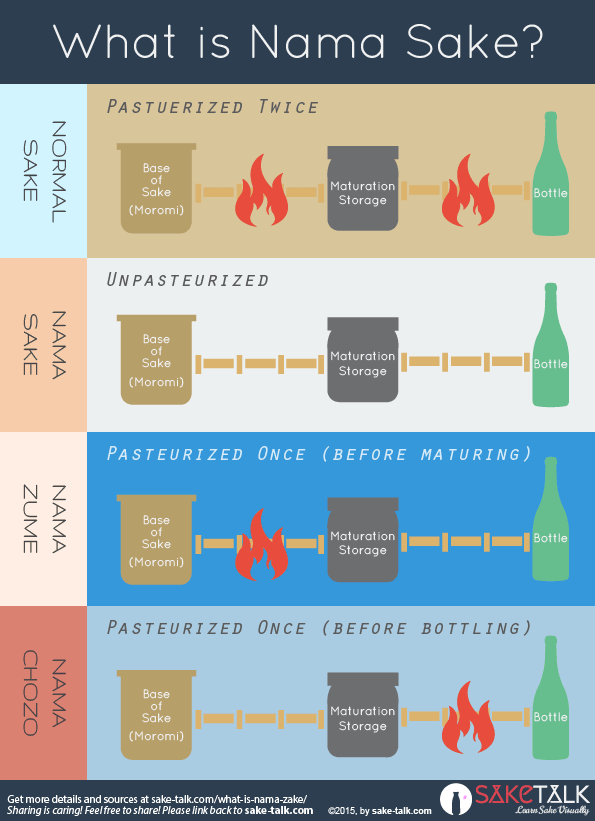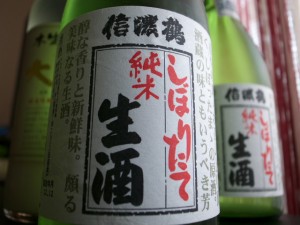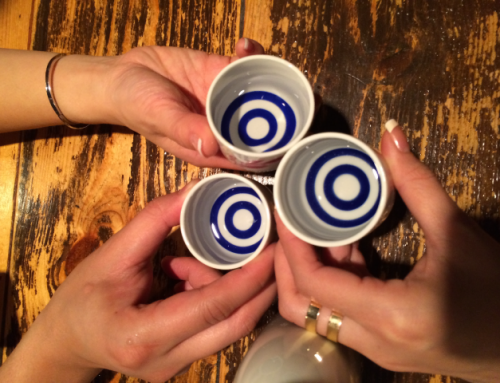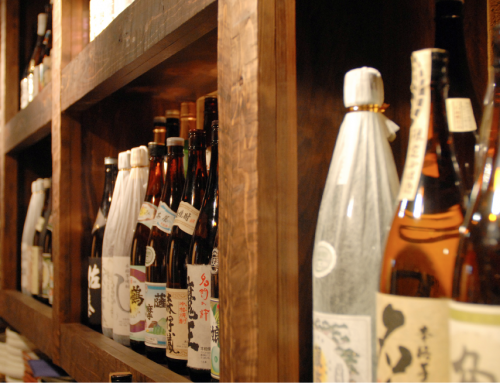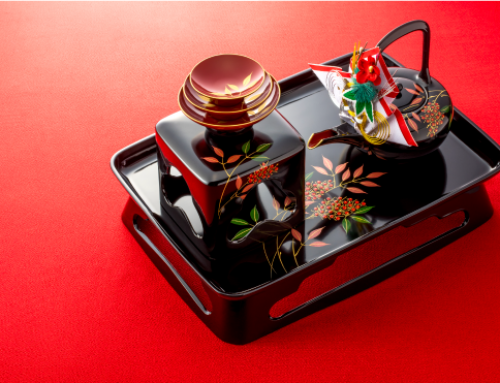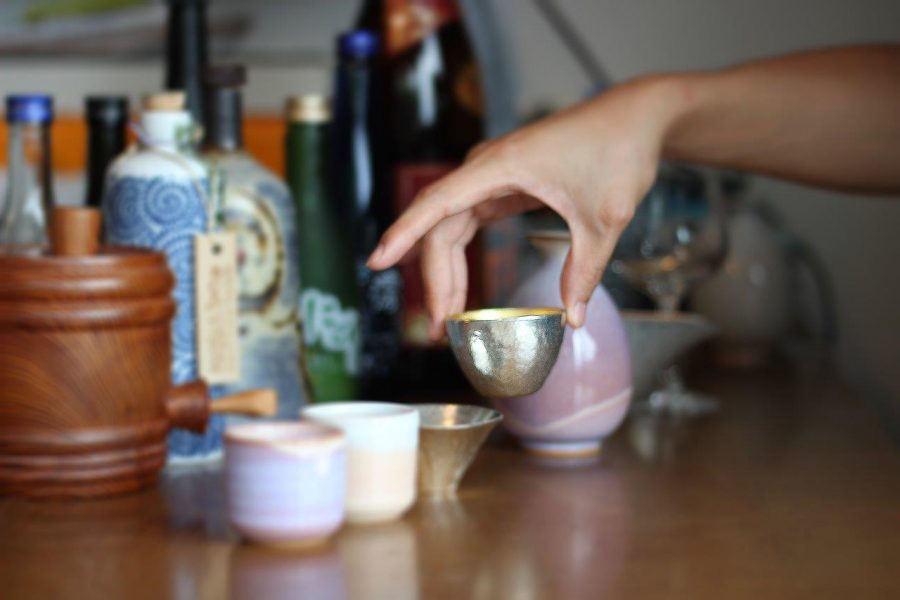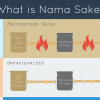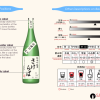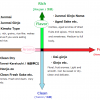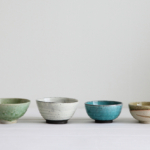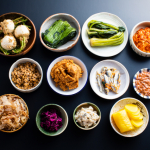Contents
- 1 How Do We Write Nama Sake in Japanese?
- 2 What is Nama Sake/Namazake?
- 3 How Nama Sake/Namazake Differs from Normal Sake?
- 4 Why Do We Pasteurize Sake?
- 5 How Long Does Nama Sake/Namazake Last?
- 6 How to Store Nama Sake/Namazake?
- 7 Names of Nama Sake with Different Pasteurization Processes
- 8 What is the Chracteristics of Nama Sake/Namazake?
Nama Sake, also known Namazake or fresh sake, is unpasteurized Sake.
But how to store? How long does it last? How does it taste? Here’s the complete guide to Nama Sake!
How Do We Write Nama Sake in Japanese?
Often called Nama Sake, the proper name for this fresh Sake is ‘Namazake’ (Nar-mar-zar-keh). Kanji for Namazake is 生酒 (or なまざけ in Hiragana).
What is Nama Sake/Namazake?
Nama (生) literally means raw or fresh. In the context of Sake, it refers to ‘unpasteurized’. On the other hand, Zake (酒) is the same as Sake. So Namazake literally means (raw, fresh) unpasteurized Sake.
How Nama Sake/Namazake Differs from Normal Sake?
Normal Sake is pasteurized twice in the Sake brewing process. One is after filtering and the other after diluting. On the other hand, Namazake is pasteurized only once or even none, being fresher Sake!
Check out ‘Sake Making Process’ Page to see when during the brewing process Sake is pasteurized!
Namazake have fresher taste and fruitier aroma, whereas normal pasteurized Sake is more subtle and soft flavor and usually more suited with food.
Why Do We Pasteurize Sake?
Without pasteurization, Sake can easily deteriorate by a type of lactic acid bacteria, called ‘Hiochi Kin’ in Japanese. If any of the bacteria gets into Sake, the Sake becomes white and cloudy with bad odor.
Sake breweries pasteurize Sake, in order to kill off the bacteria that may be there. Also, pasteurization will kill enzymes that accelerate the aging of Sake.
Sake without pasteurization can change its flavor and aroma quite easily and quickly. So it is important to pasteurize Sake to stabilize and maintain the quality.
How Long Does Nama Sake/Namazake Last?
Namazake is usually best to be consumed as quickly as possible. For information, it can last up to 6 months if unopened and for 2 weeks after opened.
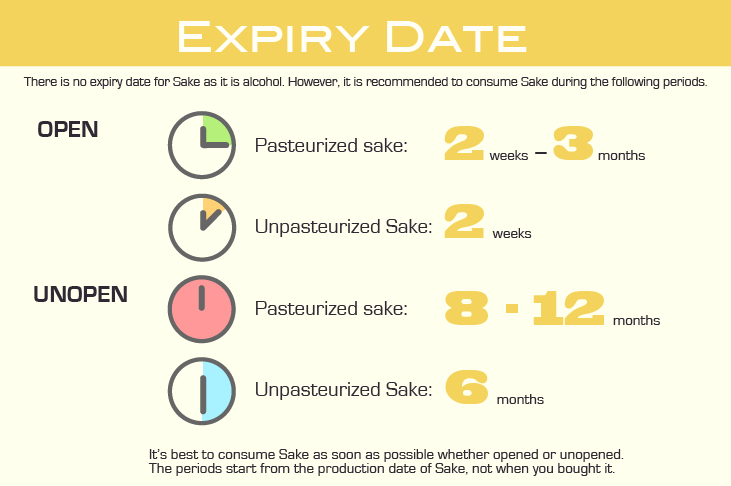
How to Store Nama Sake/Namazake?
It has to be always stored in a fridge whether opened or unopened. Why? Because you don’t want to allow the enzymes or bacteria to deteriorate the Sake as Hiochi-kin (Sake deteriorating bacteria) becomes inactive under 10°C or 50°F.
Check out ‘How long does Sake last? How to Store Sake?’ Page to learn the expiry date and storage of Sake!
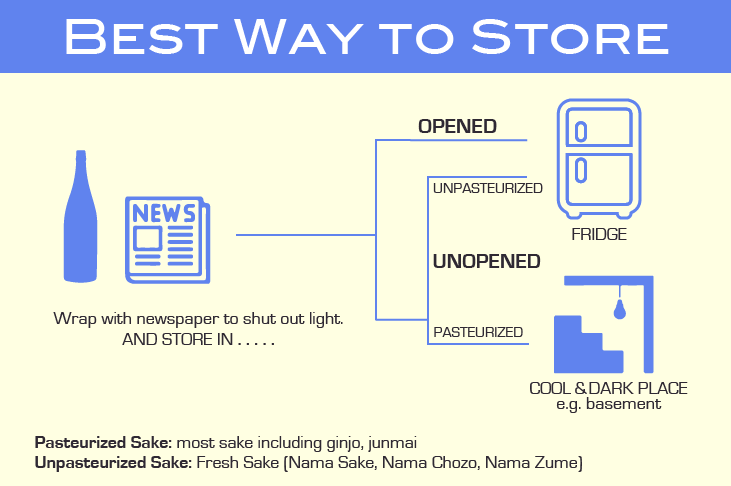
Names of Nama Sake with Different Pasteurization Processes
・Namazake (生酒):
Completely unpasteurized Sake, also known as fresh Sake. It has not gone through any of the 2 pasteurization processes. It gives you the impression of young and fresh Sake. Compared to normal Sake, it has a distinct fresh aroma and flavor. Shiboritate/Shinshu (しぼりたて/新酒)are usually Namazake.

・Namazume Shu (生詰め酒):
Sake that has gone through the first pasteurization process but Not the second. It is usually matured after the first pasteurization and then shipped without pasteurizing, giving it a Namazake-like flavor. Hiyaoroshi(ひやおろし)is a Namazume Shu that has been matured over 6months through the summer. The maturing process adds some mellow taste to the fresh Sake.

・Namachozo Shu (生貯蔵酒):
Sake that has gone through the second pasteurization process but Not the first. Usually contains more umami flavor than Namazume Shu.

・Normal Sake has gone through both of the two pasteurization processes.
To sum up, generally Namazake has the highest degree of freshness, and then Namazume and Nama Chozo, and lastly normal Sake with the least freshness.
There are of course exceptions, but if you like fresh type of Sake it is better to get a Nama type of Sake because you will have a higher chance of getting something you like.
What is the Chracteristics of Nama Sake/Namazake?
Namazake, which is unpasteurized, contains a variety of active enzymes. Therefore, it gives fresher and fruitier flavors and aromas than normal Sake does. However, being unpasteurized also implies that its tastes may vary depending on how it’s stored and how long. Remember unpasteurized Sake can easily change the flavor and aroma over a short period of time.
Also if the Namazake is Shiboritate or Shinshu, meaning the first batch of Sake brewed that year, it tends to be sparkling, as enzymes are still active.

